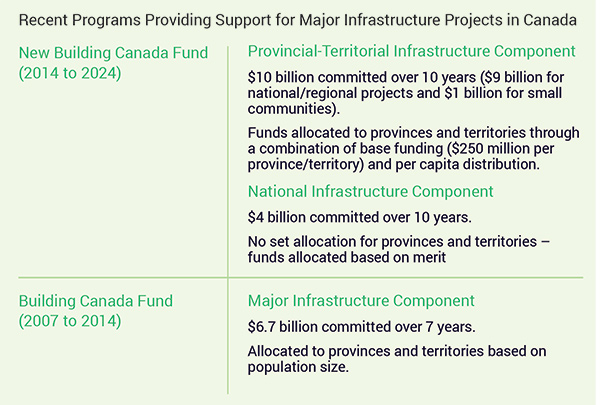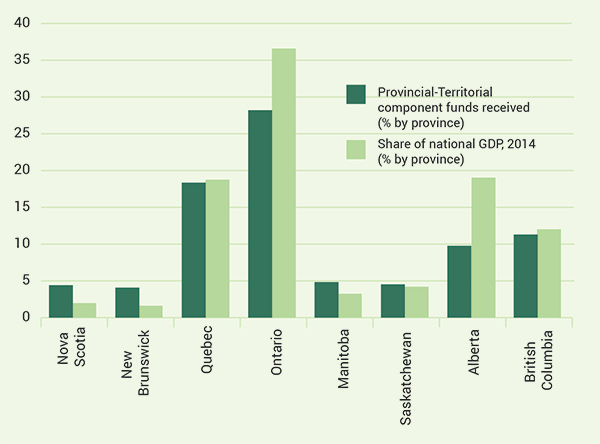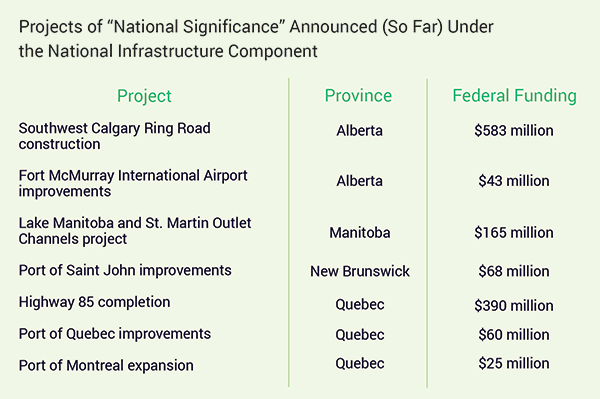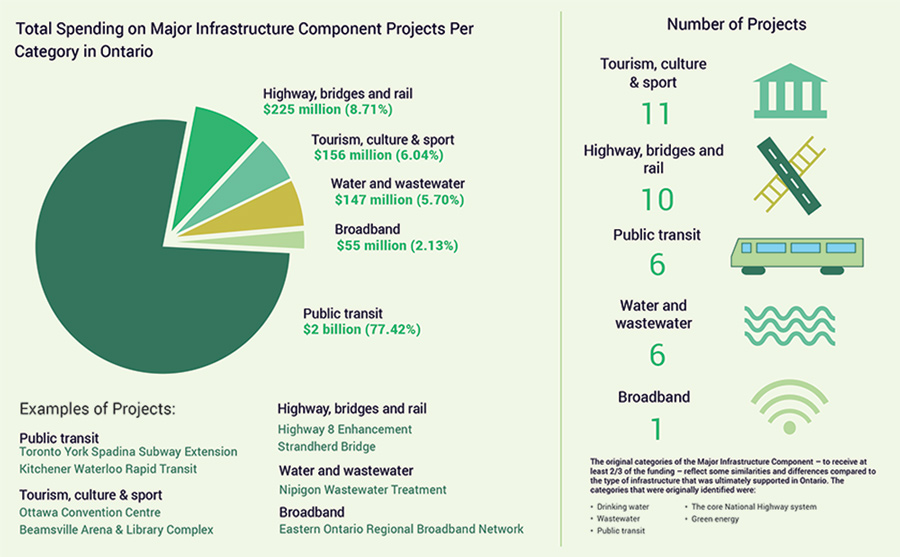February 11, 2016
The new federal government has made major commitments to Canada’s infrastructure, including a plan to nearly double spending from $65 billion to $125 billion over the next 10 years.
While new investments are welcome news, the federal government should also re-think how it chooses projects and allocates funds so it can maximize the impact of these investments.
Under the New Building Canada Fund (the most recent infrastructure initiative focused on major projects, implemented by the previous federal government), Ontario’s share of funds is far below both its current infrastructure needs and its contribution to Canada’s GDP. The new federal government has committed to focusing on strategic and trade-enabling infrastructure through the Fund in the Prime Minister’s mandate letter to the Minister of Infrastructure and Communities.

Some challenges with past approaches include:
1) Federal funding formulas have been poorly targeted, constraining the ability to support projects with the greatest economic and trade potential.
The New Building Canada Fund has two components, the largest of which is the $10-billion Provincial-Territorial Infrastructure Component. This component allocates funds through a base amount ($250 million per province/territory), as well as a per-capita distribution. Furthermore, 10 per cent of Provincial-Territorial component funding is set aside for communities with a population less than 100,000.
This approach means that some provinces, including Ontario and Alberta, receive much less to invest in infrastructure than they contribute to Canada’s GDP. Indeed, a total of approximately $2.5 billion over 10 years is set to be allocated to Ontario’s major regional and national infrastructure projects – a much smaller share than the previous initiative focused on major projects, the Major Infrastructure Component, which allocated funds based on the size of a province’s population.
As a result, there is little funding left for many of Ontario’s major infrastructure projects, compounded by the fact that about one-quarter of the province’s set allocation, or $660 million, is already tied up as part of a previously-announced commitment to the Scarborough subway extension.

“Gross domestic project, expenditure-based, by province and territory,” Statistics Canada. 2015.; “Dedicated Funding for Provinces and Territories,” Infrastructure Canada. 2014.
The new federal government recently indicated that it intends to review funding formulas. By implementing an allocation process more closely related to economic potential, the federal government could better leverage its infrastructure investments and more effectively support economic growth.
2) Decisions about which infrastructure projects receive federal funds have been opaque.
The second component of the New Building Canada Fund is the $4-billion National Infrastructure Component, which targets projects of “national significance.” It has no predetermined formula for allocating funds among provinces. While this approach offers the potential to be more strategic, it has not yet realized that potential in practice.
How projects under the National Infrastructure Component were selected has been up to the discretion of the federal government, but it hasn’t been clear what the rationale was for determining why one project had enough merit to be considered of “national significance” and another did not. For instance, the press release announcing the $583 million investment to construct the Calgary Ring Road generally touted the local and regional benefits but its value beyond that wasn’t clearly articulated.
This process hasn’t worked in Ontario’s favour. The National component could be used to make up for funding deficiencies under the Provincial-Territorial fund, but not a single project has been announced in Ontario so far even though roughly one-third of federal funds have been committed.
Ontario has clashed with the federal government over the process, particularly the federal government’s decision to not fund the Scarborough subway extension under the National Infrastructure Component. The province previously requested that it do so, arguing that Ontario’s public transit infrastructure has strategic national benefits in moving goods and people more efficiently around the country and to international markets.

Based on a review of media releases and announcements related to infrastructure projects under the National Infrastructure Component.
A project selection process that provides more clarity about how decisions are made, why projects are rejected, what the government’s objectives are, and how funded projects work to fulfill those objectives is overdue and consistent with the federal government’s renewed commitment to transparency.
3) Limited strategy behind investment decisions.
Historically, both the original and new Building Canada Plans have not selected projects based on specific strategic objectives. Indeed, the project-specific, application-based process has been inefficient and does not provide an opportunity for strategic alignment among projects of most interest to the federal government – large, transformational infrastructure that is likely to cross municipal and provincial boundaries.
Under the New Building Canada Plan, a variety of projects are eligible under the two components focused on major projects: 14 different Provincial-Territorial categories and seven National categories. The Major Infrastructure Component was even more unclear about its objectives. Since the new plan was only partly rolled out, we can examine its predecessor, the Major Infrastructure Component, for some lessons.
Major infrastructure projects were defined broadly under the earlier initiative – with five categories of projects specifically outlined as national priorities, though only two-thirds of funding was designated to support those types of projects. In Ontario, the Major Infrastructure Component ultimately ended up providing no funds to one listed priority – green energy. Meanwhile, 11 tourism, culture and sport projects received funding under the category – including local arenas and community theatres – though none of those types of projects were listed as priorities.
Ultimately, the identification of specific priorities meant very little in terms of funding for major projects, as the majority of funds went to a specific type of asset and there were vast differences in the type and scope of projects that were identified as regionally and nationally significant.

“Canada’s Economic Action Plan,” Government of Canada. March 2012. It is also based on a review of media releases and announcements by the Government of Canada, the province and local governments related to infrastructure projects under the Major Infrastructure Component.
A potential reason for this apparently scattershot approach could be the reported lack of credible data supporting infrastructure decisions in Canada. A streamlined approach to infrastructure investment – one that sets and supports specific federal priorities – would provide an opportunity to target certain types of infrastructure, as well as to strengthen planning and alignment with other government partners.
Overall, as noted in a recent Mowat Centre report and in looking toward future approaches to infrastructure investment, a clear strategy for the nation’s infrastructure will provide the greatest value from federal funds.
More related to this topic
Author
Sara Ditta
Release Date
Feb 11, 2016







